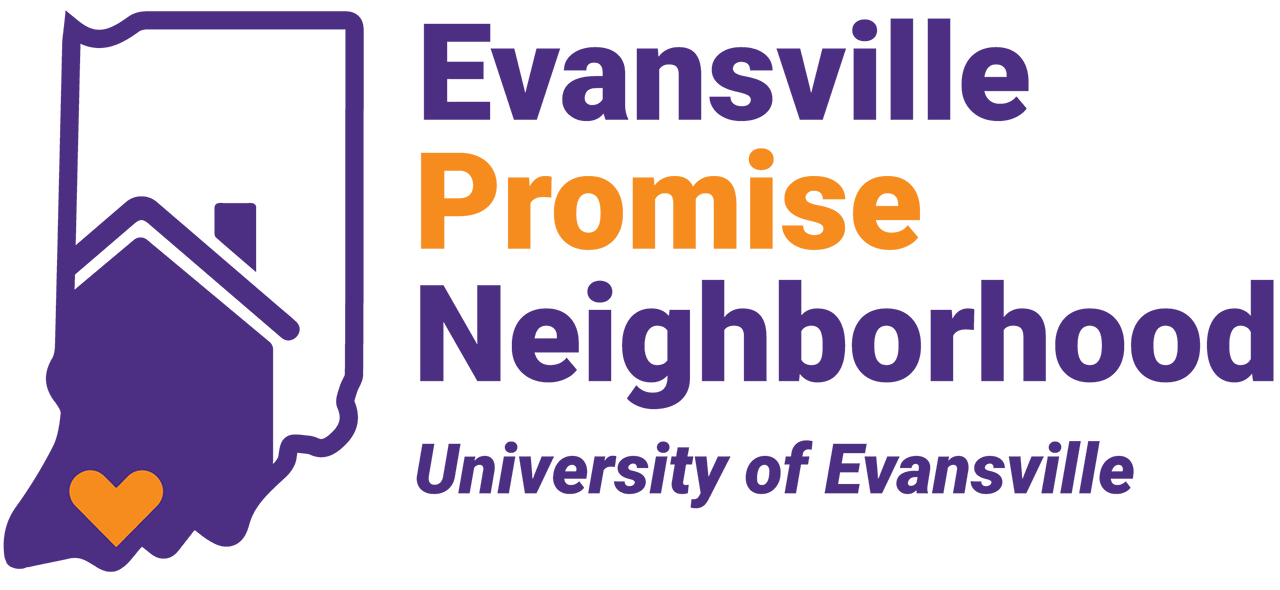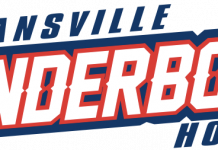At the end of March, UE announced the receipt of a $30 million grant to create the Evansville Promise Neighborhood. In partnership with 23 organizations, our community will be able to transform families in areas of concentrated need by providing wrap around care cradle to career. This page will serve as a temporary location for interested individuals to stay informed about how the effort is progressing, submit questions or ideas, and stay up to date on interesting developments from our partners. More detailed links, lists of partners and information will be posted as we have it.
Why Promise Neighborhoods?
Promise Neighborhoods is a $30 million federal grant program through the United States Department of Education, but it is also an approach driven by a vision, inspired by the Harlem Children’s Zone. The vision of the program is that all children and youth growing up in Promise Neighborhoods have access to great schools and strong systems of family and community support that will prepare them to attain an excellent education and successfully transition to college and a career. The goal of DOE with this funding: improve academic and developmental outcomes for children in areas of concentrated poverty, and to transform those communities by identifying and increasing the capacity of eligible entities focused on achieving results for children and youth throughout an entire neighborhood, cradle to career.
Why Evansville Promise Neighborhood?
Consistent with DOE’s goals, Evansville Promise Neighborhood was conceived to advance the following pipeline goals:
- Pipeline Block 1. – Improving early health and kindergarten readiness
- Pipeline Block 2.  – Improving student achievement and success
- Pipeline Block 3. – Improving post-secondary education access, affordability, completion and success and workforce readiness
- Pipeline Block 4. – Improving neighborhoods and communities
Specific results expected from the Evansville Promise Neighborhood include kindergarten readiness, proficiency in core academic subjects, successful transitions from middle to high school, high school graduation, postsecondary education/credential attainment, health and safety, stable communities, family engagement, and access to 21 st century learning tools.
How will Evansville Promise Neighborhood achieve these goals?
While the grant will not fund all entities doing valuable work in the Evansville Promise Neighborhood, MOU partners will provide targeted, evidence-based solutions to advance the pipeline goals including the following:
- Early childhood home visiting
- High-quality early childhood education
- Free early literacy resources for families
- Free adult learning programs for parents and caregivers
- Prenatal and early childhood medical care
- Chronic absenteeism and dropout prevention programs
- High quality, in-school academic support programs
- High quality, outside-of-school-time programs
- School social work services
- High School Equivalency and job skill support
- Post-secondary preparation, coaching, and exploration programs
- Workforce readiness preparation, coaching, and exploration programs
- Neighborhood-based employment and job skills assistance
- Access to and distribution of health resources, nutrition education, and healthy food
- Family stability programs
- Neighborhood revitalization
- Community Safety and violence prevention
EPN Partner Agencies
The following table lists all EPN partner agencies, the services they will provide, and their match committed to EPN initiatives. The grant application required at least a 1 to 1 match overall (not per partner). The match amount listed includes personnel, volunteer time and effort, as well as other in-kind support services the partners will provide to EPN residents. An organization may match more (or less) than it receives. Budget Allocations from the grant to the agencies cannot be shared at UE this time.
| Neighborhood Assets and Programs Supported by Federal, State, Local and Private Funds | ||
|---|---|---|
| Organization | Neighborhood Assets/Programs/Services | EPN Match |
| UE | Quality out-of-school time programs (Pathfinder), college exploration and readiness programs, ChangeLabs | 1,209,137.87 |
| EVSC | Pre-K–12 public education, Full-Service Community Schools, high quality after school programs via 21st Century Community Learning Centers, Title 1 programs, behavioral health support, family and neighborhood engagement | 5,173,195 |
| Vanderburgh County Health Dept. | Public health services, Pre to 3 Home Visiting program, immunizations, health promotion and education | 1,208,186 |
| Building Blocks | Early childhood development resources, referrals, evidence-based curriculum, early learning/transition coaches, and provider training model to improve the quality of early learning centers | 2,735,285 |
| YMCA | 21st Century Community Learning Center programs, physical fitness and family and neighborhood support and engagement | 836,000 |
| United Way | K-Camp | 152,000 |
| EVPL | Public library, child, youth and family programs, including early literacy and quality youth development programs | 126,480 |
| Goodwill Industries | Digital Skills Academy, Excel Center Charter Adult School | 2,631,197.44 |
| Ivy Tech | Community College, College Connection Coaches, and K–14 Completion Coordinators | 224,000 |
| Junior Achievement | JA Programs | 4,975,767 |
| Urban Seeds | Healthy eating and food access programs | 172,966 |
| Youth First | School Social Work programs and evidence-based student and family-strengthening programs | 1,386,435 |
| EPD | Community policing, school liaison officers, notifications | 3,403,709 |
| Ronald McDonald House Charities | Care Mobile: mobile prenatal and infant care | 1,235,117.24 |
| ECHO Housing Corporation | Housing support programs, PZ Express grocery transportation, Housing Policy Director | 110,500 |
| Grow Southwest Indiana Workforce Board | Employment assistance programs, skills assessment, training, JAG program | 653,935 |
| Dream Center | In-and out-of-school time programs, Student Success Mentors (SSMs), Wraparound Care Specialists (WACS), neighborhood revitalization | 3,402,000 |
| Potter’s Wheel | Quality out-of-school time programs, mentoring, tutoring, recreation, SSMs, WACS | 378,000 |
| Memorial CDC | Housing support, quality out-of-school time programs, mentoring, tutoring, recreation, SSMs, WACS | 374,855 |
| Boys and Girls Club | Quality out-of-school time programs | 780,675 |
| Community One | Neighborhood revitalization and improvement | 1,327,855 |
| Total | 32,497,295.55 | |
The hope of Evansville and Youth Build is also MOU partners but were not able to provide a match due to federal guidelines.
What does the grant fund?
The DOE is very specific on required outcomes for Promise Neighborhoods. There are 5 academic-focused results, 5 family and community-focused results, as well as Project Outcomes, Performance Indicators and 4 Pipelines to target. The grant does not fund all entities doing valuable work in an area. Interventions must be evidence-based, targeted at required outcomes, supported in the research as a best practice, and targeted at the identified neighborhood. There may be a non-profit in our community not presently identified as an MOU partner which could come on as a partner in later years. The grant has some funding built in for professional development for interested partners willing to target existing programming or build new solutions. In addition, as the continuous improvement plan unfolds, there may be services missed or new needs identified requiring us to bring on additional partners. There is some flexibility built into later years for that process to take place. The pipeline of services and outcomes chart is included at the end of this summary.







I hope the children in the Promise Zone areas get all the help they can !
But I don’t believe the elderly poor homeowners in 100 year plus homes will see any neighborhood revitalization and improvement .
Comments are closed.